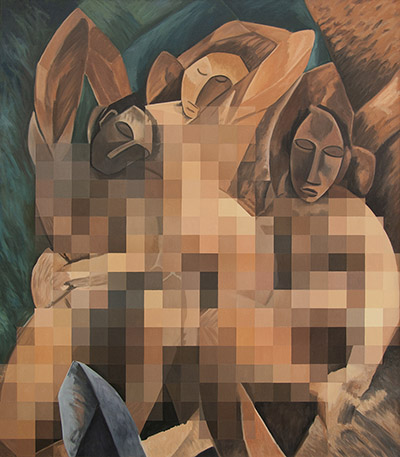|
|
|
|
|
“CENSORED: New Paintings by Pamela Joseph” will open at Francis M. Naumann Fine Art on April 2, 2015. As the title suggests, the paintings involve the theme of censorship, specifically, in this case, select details of well-known paintings and sculpture that were censored from view in art books circulated in Iran. Details that were considered inappropriate or visually offensive were covered over by means of a black felt-tip marker (when the books were imported from other countries) or by means of pixelization (when the books were published in Iran). The artist learned about the existence of these publications from a friend who lived in Iran and sent copies of publications containing such images to her. At first, the censored works appeared amusing, but they quickly stimulated a series of questions about why select details were obscured in the first place. Who did the obscuring, and what exactly was it in these images that censors believed was best kept from public view? Was this just another example of censoring the male gaze, or did it involve fundamental violations of deeply held religious beliefs? If the concealment of these details was meant to eliminate sexually explicit details, then another question is immediately raised. How successful is this form of censorship? As Goya’s two versions of his famous Maja proved centuries ago (a painting the artist includes in this series), the female figure can be far more compelling and sexually alluring when clothed. In nearly all cases of Iranian censorship, the suggestion of what has been taken from view is potentially more provocative than what is visible in the original painting or sculpture. |
|
|
|
|
|
|
|
However these questions are answered, they provided a stimulus for Joseph to turn these reproductions back into paintings, carrying with them the obscured details imposed upon them by their Iranian censors. She even went further, choosing select works of art upon which she imposed her own pixelization or covered select details with an opaque black overlay, revealing, ultimately, that her motives are inherently more painterly than political (more against the ideas of censorship in art than a critique of restrictive religious practices). Indeed, she feels that these censored images have provided her with an entirely new vehicle of pictorial expression, one that can be applied to virtually the entire history of Western Art, with results that are often amusing, but inevitably thought provoking and visually engaging.
|
|
|
|
![[Francis Naumann]](/4logo.gif)


